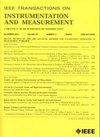Using Heterogeneous Extractor to Transfer Local-Global Knowledge for Cross-Domain Rolling Bearing Fault Diagnosis
IF 5.9
2区 工程技术
Q1 ENGINEERING, ELECTRICAL & ELECTRONIC
IEEE Transactions on Instrumentation and Measurement
Pub Date : 2025-06-23
DOI:10.1109/TIM.2025.3582302
引用次数: 0
Abstract
The intelligent fault diagnosis (IFD) methods obtain superior performance in ensuring the safety of mechanical systems, but varying working conditions degrade the performance of intelligent models. Fortunately, unsupervised domain adaptation (UDA) has been used to handle the bias and unannotated data. High-quality features contribute to facilitating subsequent domain alignment and enhancing diagnostic performance. This article aims to address the contradiction between using complex neural networks to extract better fault features and the resulting longer inference time. Specifically, a heterogeneous extractor is designed by integrating a pure CNN-based main network in parallel with a hybrid auxiliary network. The auxiliary network consists of a CNN and a ViT, connected in series, which extract local and global fault knowledge, respectively. Then, a training strategy is proposed to help the main branch enrich the extracted features, where the pure CNN is optimized to distinguish the hard-to-transfer samples identified by auxiliary CNN-ViT extractor. Finally, an information filter mechanism is introduced to facilitate mutual feature learning between the two branches. Experiments are constructed on two diagnosis datasets and a practical platform, where the comparison studies manifest the superiority of our method in fault diagnosis tasks under varying working conditions.基于异质提取器的局部-全局知识转移跨域滚动轴承故障诊断
智能故障诊断(IFD)方法在保证机械系统安全方面具有较好的性能,但工作环境的变化会降低智能模型的性能。幸运的是,无监督域自适应(UDA)已被用于处理偏差和未注释的数据。高质量的特性有助于促进后续的领域对齐和提高诊断性能。本文旨在解决使用复杂神经网络提取更好的故障特征与由此产生的更长的推理时间之间的矛盾。具体而言,通过将基于cnn的纯主网络与混合辅助网络并行集成,设计了异构提取器。辅助网络由串联的CNN和ViT组成,分别提取局部和全局故障知识。然后,提出了一种帮助主分支丰富提取特征的训练策略,其中对纯CNN进行优化,以区分辅助CNN- vit提取器识别的难以转移样本。最后,引入了一种信息过滤机制,以促进两个分支之间的相互特征学习。在两个诊断数据集和一个实际平台上进行了实验,对比研究表明我们的方法在不同工况下的故障诊断任务中具有优越性。
本文章由计算机程序翻译,如有差异,请以英文原文为准。
求助全文
约1分钟内获得全文
求助全文
来源期刊

IEEE Transactions on Instrumentation and Measurement
工程技术-工程:电子与电气
CiteScore
9.00
自引率
23.20%
发文量
1294
审稿时长
3.9 months
期刊介绍:
Papers are sought that address innovative solutions to the development and use of electrical and electronic instruments and equipment to measure, monitor and/or record physical phenomena for the purpose of advancing measurement science, methods, functionality and applications. The scope of these papers may encompass: (1) theory, methodology, and practice of measurement; (2) design, development and evaluation of instrumentation and measurement systems and components used in generating, acquiring, conditioning and processing signals; (3) analysis, representation, display, and preservation of the information obtained from a set of measurements; and (4) scientific and technical support to establishment and maintenance of technical standards in the field of Instrumentation and Measurement.
 求助内容:
求助内容: 应助结果提醒方式:
应助结果提醒方式:


